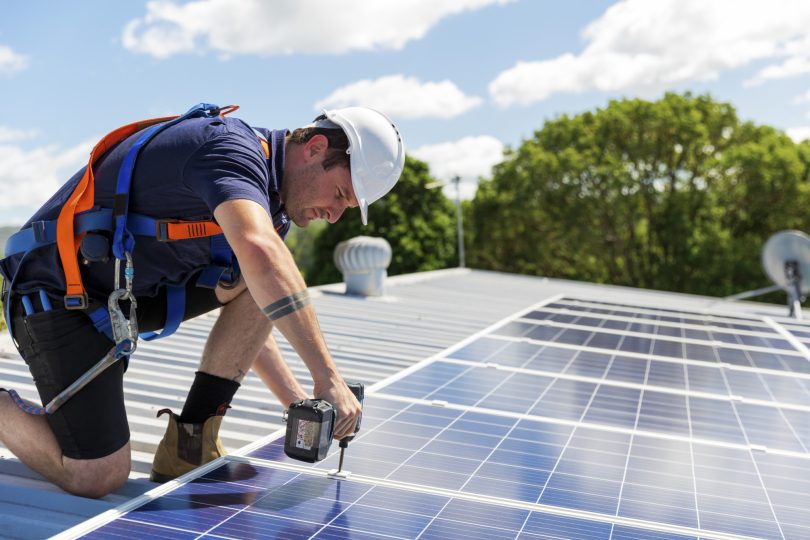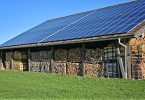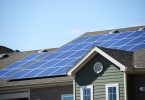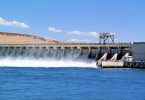Did you know that, in the last decade, solar has seen an average annual growth rate of 33 percent?
With more homeowners making the transition for themselves, it’s easy to see that the energy alternative works, but is it worth it for your home? How can you be sure it’s the best decision for you?
Luckily, we’re here to help. Read on to learn everything you need to know about home solar panel installation cost and the things you should consider before making the transition.
How Much Does Home Solar Panel Installation Cost?
On average, the cost for solar panels is $3 to $5 per watt or $15,000 to $20,000 for a typical 5kW system. There are certain factors that can impact costs, though.
What Should You Consider First?
When it comes to solar panel installation costs, there are some things you’ll need to take into consideration. Here are a few of the most important.
1. Review Your Energy Bills
Since solar panels generate their own power, they can offset your home’s monthly energy bill greatly, if not eliminate it altogether. The higher your current bill is, the more likely you are to benefit from switching.
It’s important to remember, though, that your electricity rates and usage change throughout the year. Consider those fluctuations when you’re making your decision, as changing prices can mean changing savings.
2. How Much Sun Does Your Home Get?
The more sun your home gets, the more energy is going to be produced. So, if you live in a state like Arizona or Florida, you’re a lot more likely to benefit from switching. Even if you don’t live in a sunny state, though, you can also consider your home’s orientation to the sun.
If you have a lot of trees above your home and receive little sunlight throughout the day, these might not be the best option for you, or you might need to take a few extra steps. However, if you get a lot of direct sunlight and have the optimal type of roofing, then you’re going to find that you’re an ideal candidate.
For an accurate estimate, using this calculator can be a big help.
3. Gather Estimates
Next, you’ll need to spend some time gathering your estimates. Remember, the majority of costs are found in the installation and the purchase of the actual panels. So, while there’s an initial investment, you’re highly likely to make up for those initial costs as time goes on.
Remember, most solar systems are designed to last for at least 20 years with little to no maintenance, and almost no change in the amount of energy produced.
So, you’ll need to calculate your total current monthly energy usage and then determine what size system your home would need. If you don’t know your current monthly usage, take a look at your monthly bill.
From there, call a few solar installation companies in your area to get free quotes. You’ll want at least three to five if you’re able to find them, as this is what’s going to help you make your most informed decision. From there, you can determine which would save you the most amount of money and move forward with the installation.
Also, be sure to ask about rebates or other programs that might help lower your overall installation cost.
4. Research Government Incentives
Your next step is to research government incentives, usually in the form of tax credits.
The Residential Clean Energy Credit — a substantial update to a pre-existing tax break that’s set to expire at the end of 2023 — allows homeowners to recoup 30 percent of their installation cost as a federal tax credit.
So, if your installation costs $15,000, you would have a $4,500 credit to take advantage of once the tax season rolled around. It’s important to note that credit isn’t refundable so, any money left over after your tax bill is covered won’t get paid out to you. You may, however, be able to apply any leftovers toward owed taxes in the coming years.
This credit only applies to solar panels installed after Dec. 31, 2021. The rate will remain the same until 2032, and then it’ll begin to decrease incrementally.
You should also check your state’s individual incentives. These extra incentives might come in the form of cashback, waived fees, expedited permits, or even property tax exemptions. In some cases, you might even be able to sell your excess energy to local utility companies.
Decision Time
If you can afford that initial investment, and you live in an area with a great solar rating and high energy rates, it’s definitely worth installing solar panels. You’ll be giving the environment and your wallet a break, and it’ll be great for your home in the coming years.
There are other options available if you can’t afford that initial investment, though. You can consider financing with a solar loan, or you can even lease panels. Both these options offer a lower upfront cost, but won’t exactly raise the value of your home since you don’t own the panels directly.
Remember, though, no matter which route you decide to take, you’re going to find energy savings after your installation has been completed.
Is Solar Right for Your Home?
Once you’ve considered home solar panel installation cost and your potential savings, deciding whether or not it’s best for your home is going to become a much easier decision to make. Between government incentives and the amount you’re like to save on your monthly electric bills, you’re likely to find that the transition would be a great one for you to make.
Luckily, we’re here to help every step of the way. Contact us to get started today.






